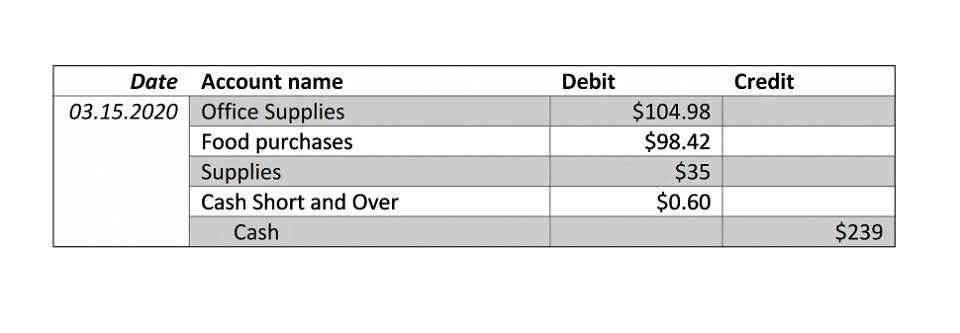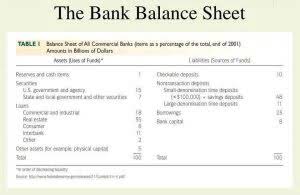
To create a cash flow statement, start with your net income, and adjust for non-cash transactions and changes in working capital in the operating activities section. To analyze your cash flow statement, examine cash flow from operations in relation to net income, identifying trends in cash flow from investing and financing. Positive cash flow from operations indicates healthy operations, whereas reliance on financing signals issues.

What Is Included in a Balance Sheet?
The balance sheet presents the assets, liabilities, and equity of the entity as of the reporting date. The report format is structured so that the total of all assets equals the total of all liabilities and equity (known as the accounting equation). This is typically considered the second most important financial statement, since it provides information about the liquidity and capitalization of an organization.
How to Build Business Credit Fast
![]()
This integration ensures the Balance Sheet’s equity section accurately reflects accumulated profits reinvested in the company. While the Income Statement and Balance Sheet provide much data for the Statement of Cash Flows, detailed cash reconciliation is a subsequent step. In order to get the clearest scope into your business’s performance, you must analyze them together rather than individually. A complete set of financial statements is used to give readers an overview of the financial results and condition of which of the following financial statements typically is prepared last? a business.
- This statement provides insights into a company’s liquidity and its ability to generate cash to meet obligations and fund growth.
- The difference between revenue and total costs and expenses is the net profit.
- The report format varies, but can include the sale or repurchase of shares, dividend payments, and changes caused by reported profits or losses.
- It sets the stage for the other two statements by providing the context of a company’s financial position.
- This integration ensures the Balance Sheet’s equity section accurately reflects accumulated profits reinvested in the company.
What Is Included in a Profit and Loss Statement?
The statement of cash flows presents the cash inflows and outflows that occurred during the reporting period. This can provide a useful comparison to the income summary income statement, especially when the amount of profit or loss reported does not reflect the cash flows experienced by the business. This statement may be presented when issuing financial statements to outside parties. The importance of each financial statement varies based on the user’s needs. Investors might prioritize the profit and loss statement for profitability insights while creditors may focus on the balance sheet to assess liquidity and financial health.

A balance sheet is like a photograph; it captures the financial position of a company at a particular point in time. The balance sheet presents a company’s assets, liabilities, and shareholders’ equity at a specific point in time. It sets the stage for the other two statements by providing the context of a company’s financial position. The profit and loss statement then details the company’s operational performance over a period, showing how revenues translate into net income or loss. This net income from the profit and loss statement is gym bookkeeping a direct link to the balance sheet, as it contributes to the equity portion, reflecting the company’s retained earnings or accumulated losses. Businesses prepare four primary financial statements, each offering a distinct perspective on the company’s financial activities.
- This clarity is vital for assessing a firm’s ability to generate positive cash flow, fund operations, and grow without external financing.
- While the Income Statement and Balance Sheet provide much data for the Statement of Cash Flows, detailed cash reconciliation is a subsequent step.
- Sales revenue is the income from business activities, COGS represents the direct costs of producing goods, and operating expenses cover the costs of running the business.
- These statements are used for planning and decision-making purposes, allowing companies to forecast the effects of significant changes, such as acquisitions, divestitures, or new financing.
- They summarize a company’s financial activities over a specific period or at a particular moment in time.
- That’s where a pro forma analysis comes in, which involves projecting future statements and target goals.
- Key elements of a business balance sheet include cash and cash equivalents, accounts receivable, inventory, property, plant and equipment, accounts payable, and accrued expenses.
The difference between revenue and total costs and expenses is the net profit. Key elements of a business balance sheet include cash and cash equivalents, accounts receivable, inventory, property, plant and equipment, accounts payable, and accrued expenses. Also, shareholders’ equity encompasses retained earnings and issued capital. This statement provides insights into a company’s liquidity and its ability to generate cash to meet obligations and fund growth. It consolidates cash movements from operating, investing, and financing activities by drawing data from the other finalized statements, providing a complete financial overview.
Statement of Owner’s Equity
The income statement presents the revenues, expenses, and profits/losses generated during the reporting period. This is usually considered the most important of the financial statements, since it presents the operating results of an entity. Financial statements are essential tools for understanding a company’s financial health and operational performance.
.jpg)
.jpg)





